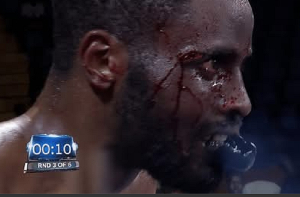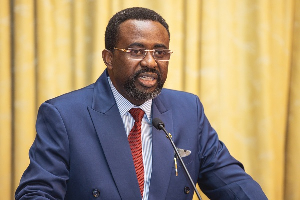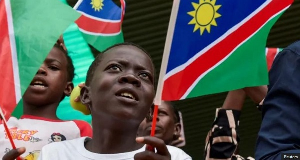A GNA feature by Hannah Asomaning
Accra, Oct. 24, GNA - The room was filled with giggles when the question: Who has not had malaria before was asked. Some even thought it was an unnecessary question.
Approximately 300 million people worldwide are affected by malaria out of which about 120 million report to health facilities with between one million to 1.5 million of them dying every year. The symptoms, fever, shivering, pain in the joints and headache, quickly disappear once the parasite is killed
Malaria parasites are transmitted from one person to another by the female anopheles mosquito. The males do not transmit the disease as they feed only on plant juices.
There are about 380 species of anopheles mosquito, but only 60 or so are able to transmit the parasite.
Like all other mosquitoes the anopheles breeds in water. Each species of anopheles have its preferred breeding grounds; feeding patterns and resting place. Their sensitivity to insecticides is also highly variable.
Malaria is diagnosed by the clinical symptoms and microscopic examination of the blood. It can normally be cured by anti-malarial drugs.
The plasmodium develops in the gut of the mosquito and is passed on in the saliva of an infected insect each time it takes a new blood meal. The parasites are then carried by the blood into the victim's liver where they invade the cells and multiply:
In endemic regions, where transmission is high, people are continuously infected so that they gradually develop immunity to the disease. Until they have acquired such immunity, children remain highly vulnerable.
Pregnant women are also highly susceptible since the natural defence mechanisms are reduced during pregnancy and accounts for a substantial number of miscarriages and low birth weight babies.
Previously extremely widespread, the malaria is now mainly confined to Africa, Asia and Latin America.
Eighty per cent of malaria cases occur in tropical Africa, where malaria accounts for 10 per cent to 30 per cent of all hospital admissions and is responsible for 15 per cent to 25 per cent of all deaths of children under the age of five.
Around 800,000 children under the age of five die from malaria every year
The problems of controlling malaria in most African countries are aggravated by inadequate health structures and poor socio-economic conditions.
The situation has become even more complex over the last few years with the increase in resistance to the drugs normally used to combat the parasite that causes the disease.
Provision of early diagnosis and prompt treatment of all people at risk, selective application of sustainable preventive measures, including vector control adapted to the local situations, an immediate, vigorous and wide-scale response to epidemics and the development of reliable information on infection risk, living conditions of concerned populations, and vectors are some measures that can be taken to deal with malaria.
This might have informed the decision to distribute over two million treated mosquito nets nationwide to children under two years between November 1 and 5 in Ghana by the United Nations Children's Fund (UNICEF) in collaboration with Creative Storm, a media organization, The exercise, which is part of an extended programme for the National Immunization Day and a campaign against malaria in Ghana, is held annually to sensitize the population, especially mothers, about the importance of immunization.
The week-long programme is also meant to boost the chances of child survival for millions of children across Ghana.
Mr Victor Ankrah, Project Officer at the Child Health Department of UNICEF, who announced the programme at a two-day workshop for media practitioners nation-wide, said there would be about 9,050 immunization points around the country where the treated nets would also be distributed.
He said an estimated 5.4 million children would receive the long-lasting bed nets and there would be people to ensure that all children were reached.
Mr Ankrah said the programme was also in line with the objective of the Millennium Development Goal of promoting child survival and growth. "Early treatment of malaria is critical to reducing incidence of death caused by the disease," Mr Ankrah advised.
He announced that the programme would in addition to supplying the treated bed nets provide children with Vitamin A supplement, measles and polio vaccinations, de-wormers and Oral Re-hydration Salts as well as advising nursing mothers on the importance of exclusive breastfeeding within the first six months of child birth.
"Thus the November 1 to November 5 Child Health Campaign would provide a number of child survival mechanisms to over 9,550 communities," Mr Ankrah said.
Malaria thus has social consequences and is a heavy burden on economic development. It is estimated that a single bout of malaria costs a sum equivalent to over 10 working days in Africa. The cost of treatment is between 0.08 dollars and 0.30 dollars according to the type of drugs prescribed as determined by local drug resistance.
It is known what action is necessary to prevent the disease and to avoid or contain epidemics and other critical situations. The technology to prevent, monitor, diagnose and treat malaria exists. It needs to be adapted to local conditions and to be applied through local and national malaria control programmes. Malaria is complex but it is a curable and preventable disease.
Health News of Tuesday, 24 October 2006
Source: GNA
















